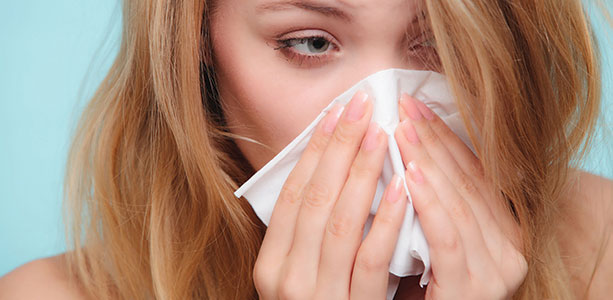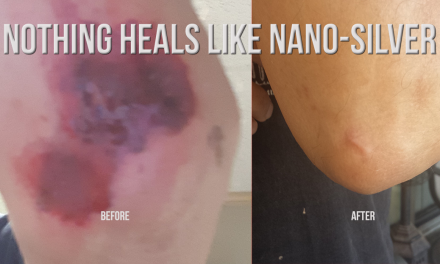What do Enterovirus D68, Ebola and Influenza have in common? The answer is that they are all viruses, and they have all been in the news over the past year. This article will provide a brief discussion of these viruses, and what we can do to strengthen our immune systems—arguably the most effective approach that can be taken in protecting ourselves against these and other viruses once exposed to them.
ENTEROVIRUS D68
Enterovirus D68 (EV-D68) is one of more than 100 non-polio enteroviruses. EV-D68 can cause mild to severe respiratory illness. Mild symptoms may include fever, runny nose, sneezing, cough, and body and muscle aches. Severe symptoms may include wheezing and difficulty breathing. Anyone with respiratory illness should contact their doctor if they are having difficulty breathing or if their symptoms are getting worse.1
Since EV-D68 causes respiratory illness, the virus can be found in an infected person’s respiratory secretions, such as saliva, nasal mucus, or sputum. EV-D68 likely spreads from person to person when an infected person coughs, sneezes, or touches a surface that is then touched by others. In the United States, people are more likely to get infected with enteroviruses in the summer and fall. Cases are likely to decline later in the fall.2
EBOLA
Ebola, previously known as Ebola hemorrhagic fever, is a rare and deadly disease caused by infection with one of the Ebola virus strains. Ebola is caused by infection with a virus of the family Filoviridae, genus Ebolavirus. Ebola was first discovered in 1976 near the Ebola River in what is now the Democratic Republic of the Congo. Since then, outbreaks have appeared sporadically in Africa.3
The best way to prevent exposure to Ebola is to avoid travel to an area affected by the 2014 Ebola outbreak. CDC has issued a Warning, Level 3 travel notice for U.S. citizens to avoid nonessential travel to Guinea, Liberia, and Sierra Leone. CDC has downgraded the travel notice for Nigeria to a Watch, Level 1 because of the decreased risk of Ebola in Nigeria. A level 2 travel notice was also issued for the Democratic Republic of the Congo (DRC). If you must travel to those areas, wash your hands frequently or use an alcohol-based hand sanitizer. Also, avoid contact with blood and body fluids of any person, particularly someone who is sick. Seek medical care immediately if you develop fever (temperature of 101.5°F/ 38.6°C) and any of the other following symptoms: headache, muscle pain, diarrhea, vomiting, stomach pain, or unexplained bruising or bleeding.4
INFLUENZA
Influenza (“the flu”) is an infectious disease caused by RNA viruses of the family Orthomyxoviridae, the influenza viruses. The most common symptoms are chills, fever, runny nose, sore throat, muscle pains, headache (often severe), coughing, weakness/fatigue and general discomfort. Although it is often confused with other influenza-like illnesses, especially the common cold, influenza is a more severe disease.5 Influenza may produce nausea and vomiting, particularly in children, but these symptoms are more common in the unrelated gastroenteritis, which is sometimes inaccurately referred to as “stomach flu” or “24-hour flu.”6 Typically, influenza is transmitted through the air by coughs or sneezes containing the virus. Influenza can also be transmitted by direct contact with bird droppings or nasal secretions, or through contact with contaminated surfaces.
VITAMIN A
Vitamin A helps regulate the immune system, which helps prevent or fight off infections by making white blood cells that destroy harmful bacteria and viruses.7,8,9,10,11,12 The skin and mucosal cells (cells that line the eyes and the respiratory, urinary, and intestinal tract) function as a barrier and form the body’s first line of defense against infection. When those linings break down, it becomes easier for bacteria to enter the body and cause infection. Vitamin A promotes healthy surface linings of the eyes and the respiratory, urinary, and intestinal tracts,13 helping the skin and mucous membranes function as a barrier to bacteria and viruses.14,15,16 In addition vitamin A plays a central role in the development and differentiation of white blood cells, such as lymphocytes, which play critical roles in the immune response by fighting infections.17
VITAMIN C
Vitamin C also plays a profound role in the health of the immune system, stimulating the production and function of white blood cells, including leukocytes, neutrophils, lymphocytes and phagocytes.18,19,20,21,22,23,24 In addition, research has demonstrated that supplemental vitamin C increases serum levels of antibodies25,26 and C1q complement proteins.27,28,29 Also, Vitamin C has been shown to increase interferon levels in-vitro,30 and research on supplemental vitamin C and the common cold suggests that it promotes an antiviral effect in humans.31 In a study involving 252 adult subjects with a cold or flu who were treated with hourly doses of 1000 mg of vitamin C for the first six hours, and then three times daily thereafter. A control group of 463 subjects were treated with pain relievers and decongestants. The results were that overall reported flu and cold symptoms in the vitamin C group decreased 85 percent compared with the control group after the administration of mega-dose Vitamin C. The researchers in this study concluded, “Vitamin C in mega-doses administered before or after the appearance of cold and flu symptoms relieved and prevented the symptoms in the test population compared with the control group.”32
VITAMIN E
Vitamin E is an antioxidant that protects the integrity of cell membranes from damage caused by free radicals.33 In particular, the alpha-tocopherol form of vitamin E protects against peroxidation of polyunsaturated fatty acids, which can potentially cause cellular damage and subsequently lead to improper immune responses.34 Several studies in animal models as well as humans indicate that vitamin E deficiency impairs both humoral and cell-mediated aspects of adaptive immunity, including B and T cell function.35 Moreover, vitamin E supplementation in excess of current intake recommendations has been shown to enhance immunity and decrease susceptibility to certain infections, especially in elderly individuals. In fact, a randomized, placebo-controlled trial in elderly nursing home residents reported that daily supplementation with 200 IU of synthetic alpha-tocopherol (equivalent to 90 mg of RRR-alpha-tocopherol) for one year significantly lowered the risk of contracting upper respiratory tract infections, especially the common cold, but had no effect on lower respiratory tract (lung) infections.36
ZINC
Zinc is essential for the integrity of the immune system, and inadequate zinc intake has many adverse effects.37 The immunologic mechanisms whereby zinc modulates increased susceptibility to infection have been studied for several decades. It is clear that zinc affects multiple aspects of the immune system, from the barrier of the skin to gene regulation within lymphocytes. Zinc is crucial for normal development and function of cells mediating nonspecific immunity such as neutrophils and natural killer cells. Zinc deficiency also affects development of adaptive immunity.38 Furthermore, in both young adults and elderly subjects, zinc supplementation decreased oxidative stress markers and generation of inflammatory cytokines.39 According to the U.S. Department of Agriculture, 12 percent of the U.S. population does not meet the estimated average requirement for zinc.40
BEE PROPOLIS
Propolis is a resinous substance collected from various plants by bees. It is used in the construction of, and to seal the cracks in, the beehive. It is a mixture of resin, essential oils and waxes, and also contains amino acids, minerals, ethanol, vitamin A, B complex, E, and flavonoids.41 In addition to its construction adhesive application, propolis also has antimicrobial properties, which helps to prevent microorganisms from entering the hive and causing illness. In human clinical research, supplementation with propolis has been shown to help effectively treat viral upper respiratory tract infections (e.g. colds and flu).42,43,44
GARLIC
Garlic has an extensive history of use against a variety of pathogens that cause infections.45,46 In in-vitro research, the antiviral activity of garlic was tested on human cytomegalovirus (HCMV). In this research, garlic was effective when administered concurrently with the HCMV, but the effect was stronger when pretreatment with garlic occurred. The authors of this study recommended that clinical use of garlic against HCMV infection should be persistent, and the prophylactic (preventive) use of garlic is preferable in immunocompromised patients.47 In other in-vitro research, garlic and its sulfur compounds were tested against selected viruses, including herpes simplex virus type 1, herpes simplex virus type 2, parainfluenza virus type 3, vaccinia virus, vesicular stomatitis virus, and human rhinovirus type 2. The sulfur compounds were found to effect antiviral activity.48
ECHINACEA
Arguably, Echinacea is the granddaddy of all immune-enhancing herbs. It is excellent in helping to prevent and treat colds and influenza. Research reveals that Echinacea supports the immune system by activating white blood cells (lymphocytes and macrophages).49 Echinacea also increases the production of interferon, an immune component, which is important in responding to viral infections.50
Several double-blind, clinical studies have confirmed Echinacea’s effectiveness in treating colds and flu.51,52,53,54 However, some research suggests that Echinacea may be more effective if used at the onset of these conditions.55,56 One study involving 238 subjects confirmed that Echinacea was safe and effective in producing a rapid improvement of cold symptoms. In the subgroup of patients who started therapy at an early phase of their cold, the effectiveness of Echinacea was most prominent.57 In a similar study, 246 subjects with a cold were treated withEchinacea preparations or a placebo.
Those treated with the Echinaceapreparations experienced a reduction of symptoms, significantly more effective than the placebo. The researchers concluded that the Echinacea preparations, “represent a low risk and effective alternative to the standard symptomatic medicines in the acute treatment of common cold.”58
MUSHROOMS
Edible mushroom extracts, especially those used in Chinese and Japanese natural medicines (Shiitake, Maitake, Reishi), are a rich source of naturally occurring polysaccharides, especially beta glucans. These polysaccharides in the aforementioned mushrooms can directly stimulate immune reactions by primarily modulating immune responsive cytokines such as IL-1, IL-2, IL-6 and INF-gamma.59,60,61 Complex polysaccharides found in these mushrooms act as immunomodulators, helping to support immune system function. These polysaccharides, among the most powerful studied,62 are well absorbed when taken orally and have been used as a potential tool for viral infections.63,64
ASTRAGALUS
Astragalus is primarily used for its immune stimulating and adaptogenic properties.65,66 The Chinese use it as a classic energy tonic, often in place of Ginseng for people under 40 years of age. Astragalus works by stimulating several factors of the immune system. Evidence based uses of Astragalus include the treatment of infections (including common cold, flu, herpes, HIV), water retention, hypertension, antioxidant, anti-inflammatory, and cardiac output.67,68,69
CONCLUSION
The nutraceuticals discussed in this article are not the only ones that can help promote a strong, healthy immune response, but they are a good start. You can use some or all of them.
References
- Enterovirus D68. Centers for Disease Control and Prevention National Center for Immunization and Respiratory Diseases, Division of Viral Diseases. Page last reviewed: September 25, 2014. Page last updated: October 10, 2014. Retrieved October 11, 2014 from http://www.cdc.gov/non-polio-enterovirus/about/ev-d68.html.
- Enterovirus D68. Centers for Disease Control and Prevention National Center for Immunization and Respiratory Diseases, Division of Viral Diseases. Page last reviewed: September 25, 2014. Page last updated: October 10, 2014. Retrieved October 11, 2014 from http://www.cdc.gov/non-polio-enterovirus/about/ev-d68.html.
- About Ebola Virus Disease. Centers for Disease Control and Prevention, National Center for Emerging and Zoonotic Infectious Diseases, Division of High-Consequence Pathogens and Pathology, Viral Special Pathogens Branch. Page last reviewed: October 3, 2014. Page last updated: October 3, 2014. Retrieved October 11, 2014 from http://www.cdc.gov/vhf/ebola/about.html.
- Questions and Answers on Ebola. Centers for Disease Control and Prevention, National Center for Emerging and Zoonotic Infectious Diseases, Division of High-Consequence Pathogens and Pathology, Viral Special Pathogens Branch. Page last reviewed: October 8, 2014. Page last updated: October 8, 2014. Retrieved October 11, 2014 from http://www.cdc.gov/vhf/ebola/outbreaks/2014-westafrica/qa.html.
- Eccles R. Understanding the symptoms of the common cold and influenza. Lancet Infect Dis. 2005; 5 (11):718–25.
- Duda K. Seasonal Flu vs. Stomach Flu by Kristina. About Heath (A New York Times Company). Updated July 02, 2014. Retrieved October 12, 2014 from http://coldflu.about.com/od/flumisconceptions/f/stomachflu.htm.
- Institute of Medicine. Food and Nutrition Board. Dietary Reference Intakes for Vitamin A, Vitamin K, Arsenic, Boron, Chromium, Copper, Iodine, Iron, Manganese, Molybdenum, Nickel, Silicon, Vanadium, and Zinc. National Academy Press, Washington, DC, 2001.
- Ross AC. Vitamin A and retinoids. In: Modern Nutrition in Health and Disease. 9th Edition (edited by Shils ME, Olson J, Shike M, Ross AC). Lippincott Williams and Wilkins, New York, 1999, pp. 305–27.
- Ross AC, Stephensen CB. Vitamin A and retinoids in antiviral responses. FASEB J 1996;10:979–85.
- Semba RD. The role of vitamin A and related retinoids in immune function. Nutr Rev 1998;56:S38–48.
- Ross DA. Vitamin A and public health: Challenges for the next decade. Proc Nutr Soc 1998;57:159–65.
- Harbige LS. Nutrition and immunity with emphasis on infection and autoimmune disease. Nutr Health 1996;10:285–312.
- Semba RD. The role of vitamin A and related retinoids in immune function. Nutr Rev. 1998;56(1 Pt 2):S38–48.
- Ross DA. Vitamin A and public health: Challenges for the next decade. Proc Nutr Soc 1998;57:159–65.
- Harbige LS. Nutrition and immunity with emphasis on infection and autoimmune disease. Nutr Health 1996;10:285–312.
- de Pee S, West CE. Dietary carotenoids and their role in combating vitamin A deficiency: A review of the literature. Eur J Clin Nutr 1996;50 Suppl 3:S38–53.
- Semba D. The role of vitamin A and related retinoids in immune function. Nutr Rev. 1998;56(1 Pt 2):S38–48.
- Prinz W, Bortz R, Bregin B, Hersch M. The effect of ascorbic acid supplementation on some parameters of the human immunological defense system. Int J Vitam Nutr Res. 1977;47(3):248–257.
- Vallance S. Relationships between ascorbic acid and serum proteins of the immune system. Br Med J. 1977;2(6084):437–8.
- Kennes B, Dumont I, Brohee D, Hubert C, Neve P. Effect of vitamin C supplements on cell-mediated immunity in old people. Gerontology. 1983;29(5):305–10.
- Panush RS, Delafuente JC, Katz P, Johnson J. Modulation of certain immunologic responses by vitamin C. III. Potentiation of in vitro and in vivo lymphocyte responses. Int J Vitam Nutr Res Suppl. 1982;23:35–47.
- Jariwalla RJ, Harakeh S. Antiviral and immunomodulatory activities of ascorbic acid. In: Harris JR (ed). Subcellular Biochemistry. Vol. 25. Ascorbic Acid: Biochemistry and Biomedical Cell Biology. New York: Plenum Press; 1996:215–231.
- Levy R, Shriker O, Porath A, Riesenberg K, Schlaeffer F. Vitamin C for the treatment of recurrent furunculosis in patients with imparied neutrophil functions. J Infect Dis. 1996;173(6):1502–5.
- Anderson R, Oosthuizen R, Maritz R, Theron A, Van Rensburg AJ. The effects of increasing weekly doses of ascorbate on certain cellular and humoral immune functions in normal volunteers. Am J Clin Nutr. 1980;33(1):71–6.
- Prinz W, Bloch J, Gilich G, Mitchell G. A systematic study of the effect of vitamin C supplementation on the humoral immune response in ascorbate-dependent mammals. I. The antibody response to sheep red blood cells (a T-dependent antigen) in guinea pigs. Int J Vitam Nutr Res. 1980;50(3):294–300.
- Feigen GA, Smith BH, Dix CE, et al. Enhancement of antibody production and protection against systemic anaphylaxis by large doses of vitamin C. Res Commun Chem Pathol Pharmacol. 1982;38(2):313–33.
- Haskell BE, Johnston CS. Complement component C1q activity and ascorbic acid nutriture in guinea pigs. Am J Clin Nutr. 1991;54(6 Suppl):1228S–1230S.
- Johnston CS, Cartee GD, Haskell BE. Effect of ascorbic acid nutriture on protein-bound hydroxyproline in guinea pig plasma. J Nutr. 1985;115(8):1089–93.
- Johnston CS, Kolb WP, Haskell BE. The effect of vitamin C nutriture on complement component C1q concentrations in guinea pig plasma. J Nutr. 1987;117(4):764–8.
- Dahl H, Degre M. The effect of ascorbic acid on production of human interferon and the antiviral activity in vitro. Acta Pathol Microbiol Scand B. 1976;84B(5):280–4.
- Sasazuki S, Sasaki S, Tsubono Y, Okubo S, Hayashi M, Tsugane S. Effect of vitamin C on common cold: randomized controlled trial. Eur J Clin Nutr. 2006;60(1):9–17.
- Gorton HC, Jarvis K, J Manipulative Physiol Ther (1999) 22(8):530–3.
- Traber MG, Atkinson J: Vitamin E, antioxidant and nothing more. Free Radic Biol Med 2007; 43(1): 4–15.
- Moriguchi S, Muraga M: Vitamin E and immunity. Vitam Horm 2000; 59: 305–36.
- Ibid.
- Meydani SN, Leka LS, Fine BC, et al.: Vitamin E and respiratory tract infections in elderly nursing home residents: a randomized controlled trial. JAMA 2004; 292(7): 828–36.
- Food and Nutrition Board, Institute of Medicine. Zinc. Dietary reference intakes for vitamin A, vitamin K, arsenic, boron, chromium, copper, iodine, iron, manganese, molybdenum, nickel, silicon, vanadium, and zinc. Washington, D.C.: National Academy Press; 2001:442–501.
- Shankar AH, Prasad AS. Zinc and immune function: the biological basis of altered resistance to infection. Am J Clin Nutr. 1998 Aug;68(2 Suppl):447S–463S.
- Prasad AS. Zinc in human health: effect of zinc on immune cells. Mol Med 2008; 14(5-6): 353–7.
- Moshfegh A, Goldman J, Cleveland L. What We Eat in America, NHANES 2001-2002: Usual nutrient intakes from food compared to dietary reference intakes. U.S. Department of Agriculture, Agricultural Research Service; 2005: 56 pgs.
- Mahmoud AS, Almas K, Dahlan AA, Indian Journal Of Dental Research (1999) 10(4):130 7.
- Cohen HA, Varsano I, Kahan E, Sarrell EM, Uziel Y. Effectiveness of an herbal preparation containing echinacea, propolis, and vitamin C in preventing respiratory tract infections in children: a randomized, double-blind, placebo-controlled, multicenter study. Arch Pediatr Adolesc Med. 2004 Mar;158(3):217–21.
- Crisan I, Zaharia CN, Popovici F, et al. Natural propolis extract NIVCRISOL in the treatment of acute and chronic rhinopharyngitis in children. Rom J Virol. 1995 Jul-Dec;46(3-4):115–33.
- Szmeja Z, Kulczyñski B, Sosnowski Z, Konopacki K. [Therapeutic value of flavonoids in Rhinovirus infections]. Otolaryngol Pol. 1989;43(3):180–4.
- Reuter HD, Phytomedicine (1995) 2:73-91.
- Sendl A, Phytomedicine (1995) 4:323–339.
- Guo NL, et al, Chin Med J (1993) 106(2):93 6.
- Weber ND, et al, Planta Med (1992) 58(5):417 23.
- See DM, Broumand N, Sahl L, Tilles JG. In vitro effects of echinacea and ginseng on natural killer and antibody-dependent cell cytotoxicity in healthy subjects and chronic fatigue syndrome or acquired immunodeficiency syndrome patients. Immunpharmacol 1997;35:229–35.
- Leuttig B, Steinmuller C, Gifford GE, et al. Macrophage activation by the polysaccharide arabinogalactan isolated from plant cell cultures of Echinacea purpurea. J Natl Cancer Inst 1989;81:669–75.
- Melchart D, Linde K, Worku F, et al. Immunomodulation with Echinacea—a systematic review of controlled clinical trials. Phytomedicine 1994;1:245–54.
- Dorn M, Knick E, Lewith G. Placebo-controlled, double-blind study of Echinacea pallida redix in upper respiratory tract infections. Comp Ther Med 1997;5:40–2.
- Blumenthal M, Hall T, Goldberg A, Kunz T, Dinda K (eds.). The ABC Clinical Guide to Herbs. Austin TX: American Botanical Council; 2003:88–96. Brinkeborn RM, Shah DV, Degenring FH. Echinaforce and other Echinacea fresh plant preparations in the treatment of the common cold. A randomized, placebo controlled, double-blind clinical trial. Phytomedicine 1999; 6(1):1 6.
- Melchart D, Walther E, Linde K, et al. Echinacea root extracts for the prevention of upper respiratory tract infections: A double-blind, placebo-controlled randomized trial. Arch Fam Med 1998;7:541–5.
- Grimm W, Müller HH. A randomized controlled trial of the effect of fluid extract of Echinacea purpurea on the incidence and severity of colds and respiratory tract infections. Am J Med 1999;106:138–43.
- Henneicke von Zepelin H, Hentschel C, Schnitker J, et al. Efficacy and safety of a fixed combination phytomedicine in the treatment of the common cold (acute viral respiratory tract infection): results of a randomized, double blind, placebo controlled, multicenter study. Curr Med Res Opin 1999; 15(3):214 27.
- Brinkeborn RM, Shah DV, Degenring FH. Echinaforce and other Echinacea fresh plant preparations in the treatment of the common cold. A randomized, placebo controlled, double blind clinical trial. Phytomedicine 1999; 6(1):1 6.
- Borchers AT, Stern JS, Hackman RM, et al. Mushrooms, tumors, and immunity. Proc Soc Biol Med 1999; 221(4):281–293.
- Mayell, M. Maitake extrcacts and their therapeutic potential. Altern Med Rev 2001; 6(1):48–60.
- Wang YY, Khoo KH, Chen ST, et al. Studies on the immunomodulating and antitumor activities of Ganoderma lucidum (Reishi) polysacharrides: functional and proteomic analyses of a fucosecontaining glycoprotein fraction responsible for the activities. Bioorg Med Chem 2002; 10(4):1057–62.
- Nanba H, Hamaguchi AM, Kuroda H. The chemical structure of an antitumor polysaccharide in fruit bodies of Grifola frondosa (maitake). Chem Pharm Bull 1987; 35:1162–8.
- Yamada Y, Nanba H, Kuroda H. Antitumor effect of orally administered extracts from fruit body of Grifola frondosa (maitake). Chemotherapy 1990; 38:790–6.
- Nanba H. Immunostimulant activity in vivo and anti-HIV activity in vitro of 3 branched b-1–6-glucans extracted from maitake mushrooms (Grifola frondosa). VIII International Conference on AIDS, Amsterdam, 1992 [abstract].
- Bone K. Clinical Applications of Ayurvedic and Chinese Herbs. Queensland, Australia:Phytotherapy Press; 1996:13–20.
- Mills S, Bone K. Principles and Practice of Phytotherapy. Edinburgh:Churchill Livingstone; 2000:273–279.
- Presser A. Pharmacist’s Guide to Medicinal Herbs. Petaluma, California:Smart Publications; 2000.
- Kuhn MA, Winston D. Herbal Therapy & Supplements: Scientific & Traditional Approach. Philadelphia:Lippincott; 2000.
- Mills S, Bone K. Principles and Practice of Phytotherapy: Edinburgh;Churchill Livingstone; 2000.











